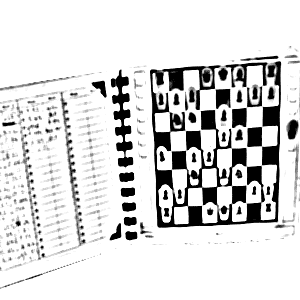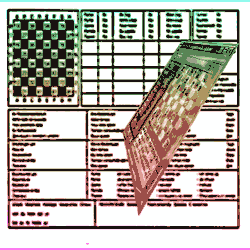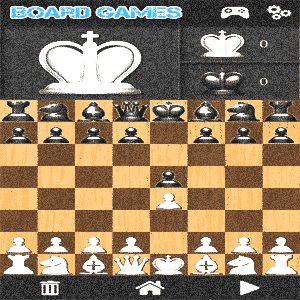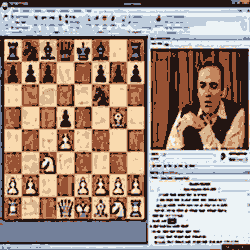Postal Chess - Fascinating Journey

Some people like to play postal chess
Basically two people agree on time limits for each move in a game. This could be anything from 3 days to maybe a month. The player playing as White records a move on a specially designed postcard. He then sends his opponent the postcard who records his reply before sending the postcard back. This continues until the game reaches it's conclusion.
Postal chess has been in existence for centuries. Some prominent OTB players dipped their toes into the world of correspondence chess. In the early 20th Century people like Paul Keres and Alexander Alekhine, who both had something to say in chess quotes, played in an effort to play stronger opponents that were difficult to source locally.
Playing Procedures

Moves are recorded on postcards and then mailed to your opponent
When two players are drawn to play each other, they send back and forth the moves recorded on the postcard as previously described. This format allows a number of days or weeks to make a move. So mistakes or blunders are much fewer than in OTB competition.
When a player receives his opponent's move on the postcard he can sit down with his chess board or chess program and take an analytical look at several possible lines before recording his move on the postcard. This means a higher standard of play than similar strength players playing OTB, who have to analyze in their minds eye before making a decision at the board.
Impact of the Computer

The coming of the computer age removed postal chess as the main form of Correspondence Chess
With the birth of the Internet it's now possible to play correspondence chess by email or on a chess server. New phenomena have emerged along with the technology. Chess databases and chess engines that continue to grow stronger have entered the mix.
Different organizations within the ICCF decide to what extent players can avail of computer aid for their games. There has been some concern that players may end up playing against a computer engine rather than a human opponent. In many cases the use of chess engines has been prohibited.
Differences from Over the Board

Over the Board players must calculate on the spot unlike Postal Chess and other Correspondence Chess players who can analyze at length
There is no such thing as playing out all possible scenarios before choosing what you believe to be the optimum move. There is no luxury of days on end before making a decision.
When you play OTB, you play one game at a time, as these games are played in real time. Correspondence Chess games, whether played through the mail or on a server, can be played in batches. Players can have more than a hundred games going at a time.
Club Encounters

Special postal chess recorder albums were designed to play these games
The idea gained traction however and London faced Edinburgh in a correspondence match a year later. The match lasted 4 years with Edinburgh eventually winning +2-1=2.
The British House of Commons contested a match by cable against the US House of Representatives in 1897. The match ended in a draw.
Advantages of Playing Postal Chess

Postal Chess is big in the United States
Your middlegame play and endgame technique should also improve as your analytical skills begin to get better. You will get better at seeing into a position as you become more familiar with certain characteristics and the possibilities they hold.
Your strength in OTB competition will inevitably increase on the back of these things. Correspondence chess really boils down to practice on analyzing positions. Playing through the mail will undoubtedly make you a stronger player.
Can Postal Chess Survive?

You can mix tradition with technology and play postal chess online
With online chess now readily accessible all over the world, who will bother with old fashioned mailing of moves and games that could take months to complete?
The answer is surprising and encouraging. There is a place for postal chess in the modern world. There is a market for the very same things that has seen it lose fans. Sure many have swapped the older slower form for real-time chess online. However the charm of doing things the old way has captivated a loyal following.
Moving On

Chess Engines changed the way chess is played with huge leaps and bounds in theory
We live in a different age now with many hi-tech forms of communications and Postal Chess is no longer the only, or even the most user-friendly way of playing long distance. Many people still play chess through the post however. The rustic feel of doing things the old way evokes a pleasant nostalgia.
It was knocked off the top spot in the Correspondence Chess world by the emergence of a more sophisticated communications platform. This new platform brought many profound changes to our game of chess besides the nature of correspondence chess. This new platform was the computer, bringing us into the age of Computer Chess.






